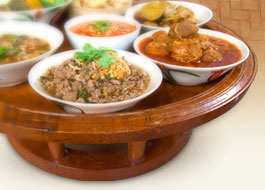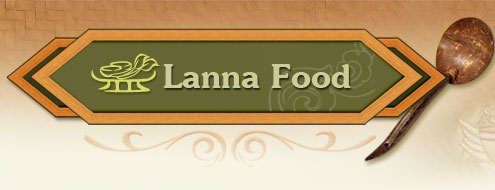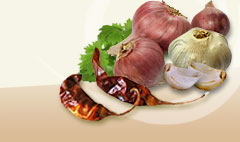Papaya |
|
|
 | Carica Papaya Linn. |
|
| |
 | Caricaceae |
|
| |
 | Papaya, pawpaw |
|
| |
 | Mak hung, loko, kuai la (Yala, Krabi), Taeng ton (Satun), mak kluai tet (Northern) (Kanchana Diwiset, et al., 1999, p. 181) |
|
| |
 | Tree with soft succulent and straight hollow trunk, white with scars where leaves have fallen off. Leaves in terminal clusters, alternate, palmatilobate, segments 7-8, petiole hollow. Inflorescence racemose cymes of yellow-white flowers, 5-petals, fragrant. Fruit single, green when young yellow when mature, oblong-ovoid; seeds numerous in the central cavity of the fruit, ovoid, brownish-blackish. (Kanchana Diwiset, et al., 1999, p. 181) |
|
| |
 |

The unripe fruit contains carbohydrates, fiber, protein, calcium phosphorus, iron, Vitamins A, B1, B2, C and E and niacin. (Phak Phuen Ban, Anan Phuen Mueang, 2007, p. 74) |

Flower is a febrifuge and stimulates menstruation.
Ripe fruit is highly nutritious, is eaten fresh on its own or mixed in a fruit salad.
The taenifuge resin contains papain, which is a digestive enzyme. It stimulates the flow of milk and is used as a mild laxative.
Unripe fruit stimulates the passing of wind and gas, stimulates urination as well as expels worms.
Resin and seeds used to expel worms, especially thread worms in children.
Roots used to treat gonorrhea, stimulate urination and the flow of breast milk, boosts appetite and prevents leuchorrea.
Leaves boiled to drink to strengthen the heart, expel worms, relieve fever, dysentery, pneumonia and helps stimulate urination. (Phak Phuen Ban Ahan Phuen Mueang, 2007 , p. 74)
|
|
| |
 | All year round |
|
| |
 |
Aruni Wisetsuk, et al., comp. (1999). Phak Phuen Ban Phak Tai. Kanchana Diwiset, ed. Nontaburi: Project for Text Development of the Institute for Traditional Thai Medicine. (inthai). |
|
| |
|
|




